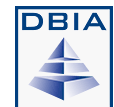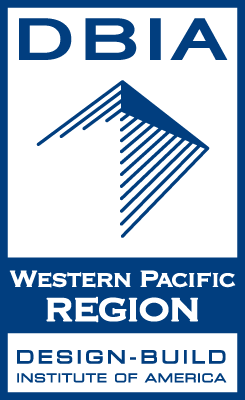
 Skip header and jump directly to primary site navigation.
Skip header and jump directly to primary site navigation.


Ventura County Medical Center Hospital Replacement Wing
Lean in Design-Build
Cross-mapping between Design-Build Done RightTM and Lean Practices (Courtesy of Lean Construction Institute)
This matrix lays out some of the relevant Lean Construction tools and techniques compared to major elements and steps in implementation as outlined in the DBIA publication Design-Build Done Right™. Our thanks to LCI member David Umstot for his assistance in compiling this material.
| Design-Build Done Right™ | Lean Practices |
|---|---|
| I. Procuring Design-Build Services | |
| D-B BP I.1.b: Owners should create an organization that shares the importance of setting expectations and fostering a collaborative relationship among all members of the project team. | Values definition, values alignment, Conditions of Satisfaction, Big Room |
| D-B BP I.1.c: Owners should identify and involve key project stakeholders at the early stages of project planning, as stakeholder goals, expectations, challenges, constraints and priorities should guide all project planning and procurement activities, including the determination and implementation of design excellence and sustainability goals. | MacLeamy Curve, value definition, Conditions of Satisfaction, Target Value Delivery (TVD) |
| D-B BP I.2.b: Owners should use a procurement process that encourages the early participation of key trade contractors. | MacLeamy Curve, TVD |
| D-B BP I.2.c: Owners should develop their design-build procurement with the goal of minimizing the prescriptive requirements and maximizing the use of performance-based requirements, which will allow the design-build team to meet or exceed the owner’s needs through innovation and creativity. | TVD, set-based design, pre-fabrication |
| D-B BP I.2.d: Owners should develop realistic project budgets and provide clarity about their budgets. | TVD |
| D-B BP I.2.e: Owners should consider the level of effort required by proposers to develop responsive proposals and should limit the deliverables to only those needed to differentiate among proposers during the selection process. | Eliminating waste, respect for people |
| D-B BP I.2.f: Owners who require project-specific technical submittals for evaluating and selecting the Design-Builder should: (a): use a 2-phase procurement process; and (b) limit the requirement for such submittals to the second phase where the list of proposers has been reduced. | Eliminating waste, respect for people |
| II. Contracting for Design-Build Services | |
| D-B BP II.1.a: Contracting parties should proactively and cooperatively identify significant project-specific risks and clearly identify in the contract how such risks will be handled. | Constraint Log |
| D-B BP II.1.b: Contracts should reasonably allocate risks to the party that is best capable of addressing and mitigating the risk. | Collaboration |
| D-B BP II.1.d: Contracts should encourage, rather than hinder, communications among project stakeholders. | Alignment Partnering, core group, transparency, collaboration |
| D-B BP II.2.a: Owners should, consistent with their overall procurement strategy, evaluate and use appropriate contractual incentives that facilitate alignment of the performance of Design-Build teams with their owner’s project goals. | Aligning commercial terms with desired behaviors |
| III. Executing the Delivery of Design-Build Projects | |
| D-B BP III.1.a: All members of the D-B team must understand that the project’s success is dependent on the ability of the team members to work collaboratively and to trust that each member is committed to working in the best interests of the project. | Values Definition, values alignment, Conditions of Satisfaction, onboarding, Last Planner® |
| D_B BP III.1.b: …personalities are well-suited to the collaborative nature of the D-B process. | Team self-selection, on-boarding, off-boarding |
| D-B BP III.1.c: All project teams should have senior leadership committed to the success of their projects. | Core group executive team |
| D-B BP III.2.a: Owners and the appropriate members of the D-B team should co-locate when justified by project characteristics. | Big Room |
| D-B BP III.2.b: Design-Builder should strive to have design and construction teams working in the same place as often as possible. | Big Room, collaboration |
| D-B BP III.2.c: Owner and Design-Builder should ensure that the administrative processes established for project execution are appropriate, well-understood and expeditious. | Standard work, visual workplace with KPI, Last Planner®, metrics-based process mapping, continuous improvement |
| D-B BP III.3.a: Owner and Design-Builder should develop and use a structured partnering process. | Alignment Partnering, on-boarding, core group concept |
| D-B BP III.3.b: Owner and Design-Builder should create an executive leadership group (including builder, designer or record and key trade contractors) to meet regularly, monitor the project’s execution and facilitate the understanding and achievement of the parties’ mutual goals. | Big Room, core team, dashboards, transparency |
| D-B BP III.3.c: Owner and Design-Builder should develop processes that enable key stakeholders (third parties) to interface directly with Design-Builder on significant elements of the work. | Big Room, constraints analysis, Last Planner® |
| D-B BP III.3.d: Owner and Design-Builder should endorse and liberally use techniques that effectively integrate design and construction activities and take steps to continue these processes through the duration of the project. | Big Room, Last Planner®, visual workplace |
| D-B BP III.3.e: The owner should be fully engaged and prepare to make timely decisions. | Big Room, Last Planner®, core group |
| D-B BP III.3.f: D-B should clearly, thoroughly and expeditiously advise owner about any issues that might impact contract price or schedule to enable the owner to make an informed decision as to how to address such issues. | Constraint log, Last Planner®, daily huddles |
| D-B BP III.4.a: The owner and Design-Builder should acknowledge the significant level of effort required to manage the development and review of the design and consequently (a) dedicate sufficient resources to foster a collaborative environment for this work; and (b) mutually develop a realistic design development plan that efficiently engages the owner and key members of the DB team in purposeful meetings. | Last Planner®, Big Room |
| D-B BP III.4.b: The owner and Design-Builder should agree upon clear, realistic and expeditious submittal and review/approval processes that are in harmony with the parties’ schedule and other project-specific goals. | Last Planner®, Big Room |
| D-B BP III.4.c: The Design-Builder should ensure that design advancement and changes to contract documents are clearly, thoroughly and contemporaneously documented and that there is a clear understanding as to when the owner is integrated into the decision-making process and notified of changes. | Big Room, Last Planner® |
| D-B BP III.4.d: The D-B team should (a) establish a trend system early in the design development process to identify, track and evaluate any potential changes before they adversely impact project cost or schedule, (b) clearly, thoroughly, and contemporaneously communicate to the owner the information derived from the trend system, and (c) maintain the trend system throughout the construction process until it is no longer needed. | Last Planner®, TVD, set-based design, design opportunities log |

Download the Lean In Design-Build Presentation
Excerpted from a joint DBIA/LCI training program on the use of Lean Construction techniques on Design-Build projects. This was created in the course of a curriculum development effort the two organizations engaged in during 2017. These charts reflect the learning objectives and other highlights of the use of Lean in Design-Build.
Learning Objectives:

Download the Joint DBIA/LCI Intro to Lean Training A3
Analyzes the rationale and goals set forth in the agreement LCI and DBIA signed to create joint training materials of relevance to the constituencies of both groups.